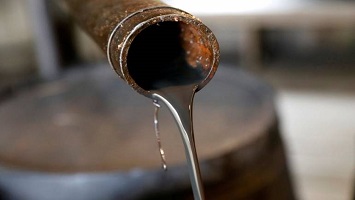Oil prices extended gains on Tuesday, supported by hopes that talks in Beijing between U.S. and Chinese officials might defuse a trade dispute between the world’s two biggest economies, while OPEC-led supply cuts also tightened markets.
Brent crude futures LCOc1 were up $1.02, or 1.78 percent, to $58.35 per barrel at 1450 GMT.
U.S. West Texas Intermediate (WTI) crude oil futures CLc1 climbed 95 cents, nearly 2 percent, to $49.47 per barrel.
U.S. Commerce Secretary Wilbur Ross said on Monday there was a “very good chance” of reaching a settlement, while China’s foreign ministry said Beijing had the “good faith” to resolve trade friction with the United States.
Some analysts warned, however, that the relationship between the superpowers remained shaky and tensions could flare anew.
“Surely, there will be more twists and turns in the saga and increasing U.S. tariffs on Chinese goods after March from 10 percent to 25 percent cannot be excluded,” Tamas Varga of PVM Oil Associates said. “For now, however, optimism prevails.”
There is also concern that a worldwide economic slowdown will dent fuel consumption, leading the hedge fund industry to cut significantly its bullish positions in crude futures.
S&P Global Ratings said it had lowered its average oil price forecasts for 2019 by $10 per barrel to $55 and $50 per barrel for Brent and WTI, respectively. “Our lower oil price assumptions reflect slowing demand and rising supply globally,” said S&P Global Ratings analyst Danny Huang.
OPEC VS SHALE
Crude prices so far in 2019 have been buoyed by supply cuts from the Organization of the Petroleum Exporting Countries including top exporter Saudi Arabia, as well as non-member Russia.
Saudi-based Arab Petroleum Investments Corp, a firm specializing in funding petroleum projects, estimated in a report on Tuesday that oil prices are likely to trade at $60 to $70 per barrel by mid-2019.
But looming over the OPEC-led cuts is a surge in U.S. oil supply – now the world’s top producer – driven by a steep rise in onshore shale drilling.
As a result, U.S. crude oil production C-OUT-T-EIA rose by 2 million barrels per day (bpd) last year to a world record 11.7 million bpd.
With drilling activity still high, most analysts expect U.S. oil production to rise further this year.
Consultancy JBC Energy said it was likely that U.S. crude production was “significantly above 12 million bpd” by early January.














